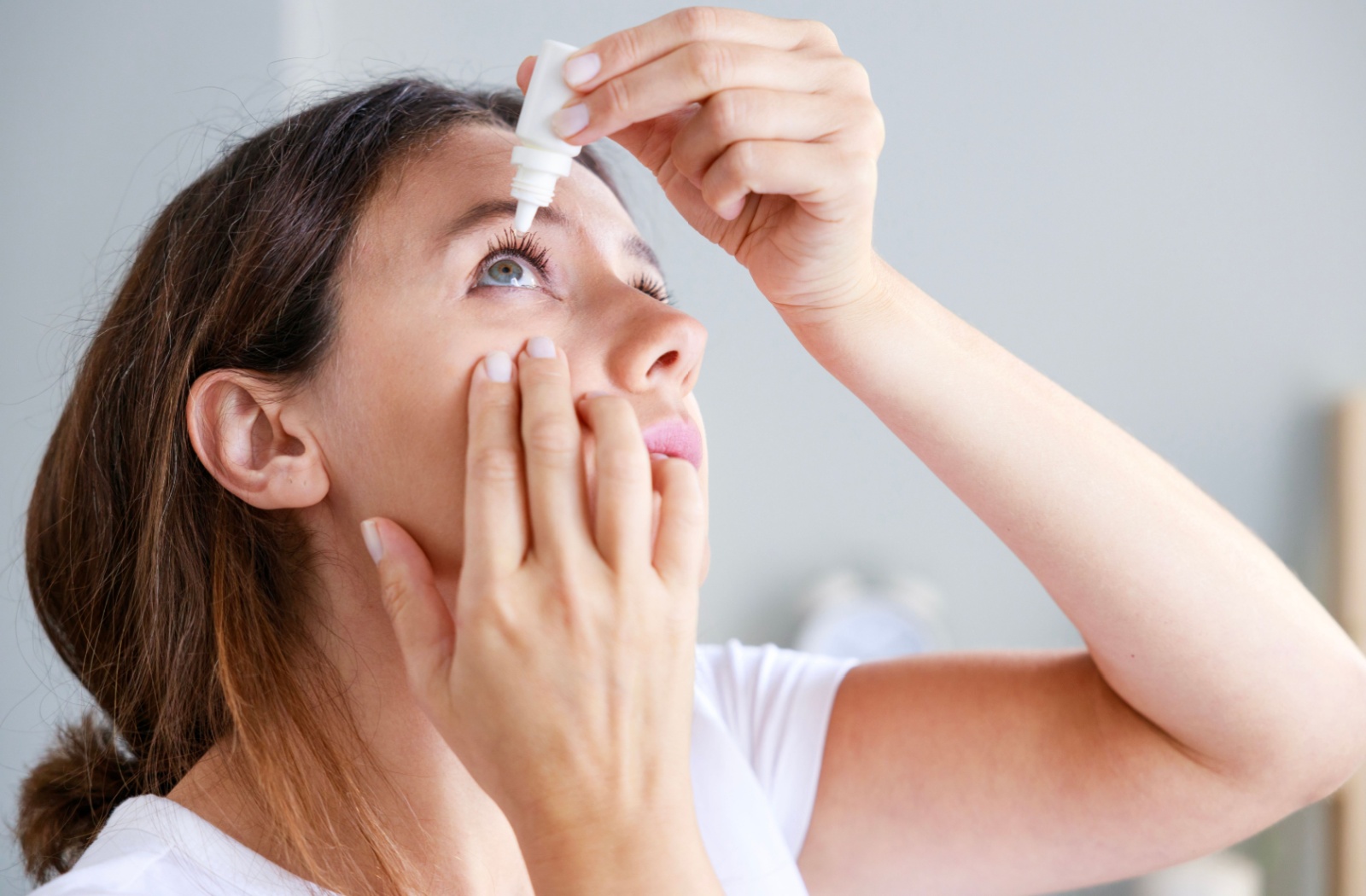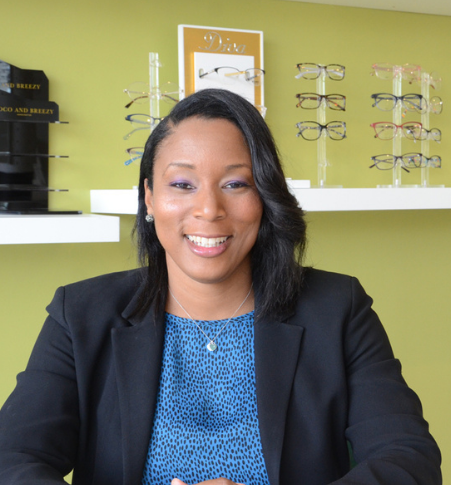Dry eyes are a common eye concern that affects millions. While others find it to be a minor annoyance, some may experience headaches in addition to dry eye symptoms.
There’s an associated relationship between dry eyes and headaches. When our eyes are dry, they can become increasingly strained and sore, which can in turn trigger headaches.
What is Dry Eye Disease?
Dry eye disease (DES) is one of the most common chronic eye conditions that affects approximately 16 million Americans.
Dry eyes refer to the dry, gritty, and irritating sensation that one might feel covering the surface of their eye. This sensation occurs when your eyes don’t produce enough tears to keep your eyes moisturized or when your tears evaporate too quickly.
There are two main types of dry eyes and each has different underlying causes that lead to eye irritation:
- Aqueous-tear Deficient Dry Eye (ADDE): This dry eye is caused when the eyes’ tear glands don’t produce enough tear fluid to keep the eye lubricated and moisturized. This type of dry eye is less common as it makes up about 10% of dry eye cases. It’s commonly associated with autoimmune conditions.
- Evaporative Dry Eye (EDE): Most cases of dry eyes are due to EDE which occurs when tears evaporate too quickly from the eyes’ surface due to an unstable tear film.
Some individuals may experience a combination of both types of dry eyes which is referred to as mixed dry eyes.
While DES is a chronic condition, symptoms can be managed to maintain a comfortable quality of life. Understanding the type of dry eye helps to develop an effective treatment and management plan.
Causes & Symptoms of Dry Eyes
DES is caused by a mosaic of different factors ranging from genetics, medications, environmental conditions, and lifestyle habits. Factors like age, medication, and medical conditions increase the risk of developing ADDE.
Common symptoms of dry eyes may include:
- Blurry vision
- Burning or stinging sensation
- Frequent blinking
- Light sensitivity
- Redness
- Watery eyes
Potential causes of EDE may include:
- Meibomian Gland Dysfunction (MGD): This is the most common cause of EDE. It occurs when meibomian glands (oil glands along the eyelid) become clogged, this reduces oil secretion that prevents tear evaporation.
- Environmental Factors: A dry and windy climate, prolonged exposure to screens, and not drinking enough water can increase the risk of tear evaporation.
- Contact Lens Wear: Overwearing contact lenses can disrupt the tear film and increase evaporation because wearing contacts for extended periods reduces oxygen supply to the cornea.
- Eyelid Problems: Conditions like blepharitis (inflammation of the eyelids) or incomplete eyelid closure can contribute to rapid tear evaporation.
The Link Between Headaches & Dry Eyes
While causation isn’t fully clear, there is a connection between headaches and dry eyes. Dry eyes may occur more often in individuals who experience headaches. One study found that individuals who experience chronic migraines have a 20% increased chance of having DES.
Both dry eyes and headaches share symptoms like soreness around the eyes, sensitivity to light, and general discomfort. Conditions that exacerbate dry eyes, such as environmental factors, prolonged near-work, and screen use, can also contribute to headaches.
When the eyes are dry, they can become strained and sore, leading to excessive squinting and increased effort focusing, leading to tension headaches. Dry eyes can cause blurry vision due to an unstable tear film, making it difficult to focus. To compensate for this, the brain has to work harder, leading to eye fatigue and headaches.
Environmental factors like prolonged use of digital devices have been linked to dry eye due to reduced blinking and exposure to blue light. This can lead to both headaches and digital eye strain.

Treatment & Prevention of Dry Eyes
Despite DES being a chronic eye condition, symptoms can be managed with both at-home and in-office treatments which can help reduce the prevalence of headaches associated with dry eyes.
For optimal management results, visiting your optometrist is key. Optometrists can help understand the type of dry eyes their patients are experiencing while assessing the severity of the dryness and its underlying cause. This information is key to developing a suitable management plan unique to a patient’s ocular needs.
At-Home Dry Eye Treatments
- Artificial Tears: Use preservative-free artificial tears to help lubricate the eyes throughout the day (or as needed). If you’re using artificial tears and an eye ointment to provide dry eye relief, use the artificial tears first and wait at least 10 minutes before applying the ointment.
- Eye Ointment: Apply a preservative-free eye ointment to the lash line before bedtime to help retain moisture and prevent dryness throughout the night. The ointment is thick like a cream and will make your vision slightly blurry.
- Humidifier: Dry conditions are a potential cause of dry eyes. Using a humidifier at home can help maintain optimal humidity levels and prevent excessive dryness in the air that can affect your eyes.
- Limit Screen Time and Take Frequent Breaks: Take frequent breaks and minimize screen time whenever possible to help reduce potential dryness caused by prolonged exposure to digital devices. Implement the 20-20-20 rule (every 20 minutes, look at something 20 feet away for 20 seconds) to reduce eye strain.
- Warm Compress: Use a warm compress on your closed eyes and gently massage around the area for a few minutes. This helps unclog oil glands found along the eyelid associated with MGD and helps stimulate tear production and alleviate dryness.
In-Office Dry Eye Treatment
If at-home remedies don’t provide adequate relief for dry eyes and headaches, your optometrist may suggest using medicated eye drops to provide comfort.
These drops are generally used twice a day, one drop in each eye in the morning and at night. However, the frequency will be determined by your optometrist The prescription eye drops are safe to use alongside at-home treatment options.
Throughout dry eye therapy, regular follow-ups with your optometrist are important to monitor progress and adjust the treatment as necessary.
Book an Appointment
At first glance, dry eyes may not seem like a serious condition but they have the potential to cause significant discomfort and trigger headaches.
Identifying the underlying cause of dry eyes is critical for effective management. Schedule an appointment with our team at River City Vision Center for your dry eye consultation!





